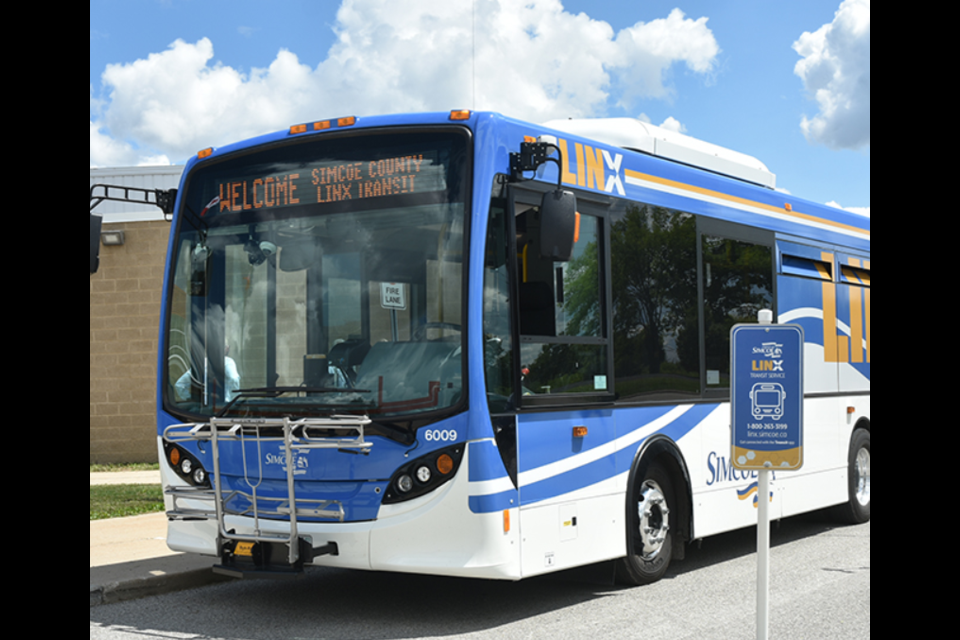After several years of work and public consultations, the County of Simcoe’s transportation master plan (TMP) has been given two thumbs up by council.
During Tuesday's committee of the whole meeting, members of county council heard a detailed update of the final draft of the plan, which includes improving roads and transit links to getting more people out of their vehicles and utilizing active transportation options.
“Today is a good day. Today is the day where after years of analysis and public consultation the third Simcoe County transit master plan is before this house,” said Nathan Westendorp, the county’s director of planning and chief planner.
Westendorp ran through highlights of what he called a “very technical document,” but noted they represent the long-term strategy for the transportation assets for the region going forward.
What is important to understand, he explained, is that the plan is not only responsive to current issues, but also anticipates future issues when it’s balanced and integrated with planned growth.
“Working with our Municipal Comprehensive Review (MCR) numbers that council adopted in August 2022, we ran a model that looked at where they could anticipate demands and upgrades to transportation facilities in response to the growth,” Westendorp said. “It’s important to know that it not only responds to the issues of today, but it also looks forward to see what the issues we think are going to happen in the future.”
At the end of the day, the transportation master plan will identify solutions for driving, transit, cycling, walking and goods movement, added Westendorp, noting the plan builds on public and stakeholder input to identify the transportation solutions.
“There’s a myriad of potential solutions we could work for into the future, but working with staff at local municipalities as well as technical agencies and the public especially … we work towards prioritizing what the solutions should be and the financial investment into it," Westendorp said.
Throughout the consultations, Westendorp said staff heard a few common themes from both the public and stakeholders, which included support for safer and improved county-wide active transportation infrastructure, a desire for improved transit connections and an overall support for county-wide transit amalgamation and improved road network efficiency.
This is the third official transportation master plan Westendorp has been involved with as part of the county. He said the major theme of this plan seemed to focus on how to move transit farther.
“We are a growing county (and) we can’t keep expanding roads. How do we move people and goods more efficiently and, knowing the growth is coming, how do we do it more cost effectively, but also efficiently and conveniently from a passenger perspective," he said.
Westendorp noted input showed there is a desire for improved transit connections.
“There’s only one rider, but there’s a multitude of transit providers, so how can we do that differently? There was a desire to explore that further,” he said. “Through all the information gathered, we developed a vision, and the vision is that we have a safe, affordable and efficient multi-modal transportation system that responds to the country's vast geography, provides the connectivity needed for its growing population and businesses and supports community environmental health. “
During the presentation, staff also provided detail on various transit, active transportation and roads recommendations and actions for the county.
“The TMP is a plan. It is not a commitment, so an endorsement by council does not lock the county into pursuing all of the projects in the timing of the plan. They do come back to council for individual discussion, class and environmental assessments and future capital decisions,” said Westendorp.
Several councillors expressed concerns about traffic congestion and the ability to connect to other neighbouring municipalities, however Christian Meile, the county’s director of transportation and engineering, said one of the many things they've learned is that the county cannot simply build its way out of congestion.
“There are certainly network improvements to be made like the (Highway) 400/404 link … and they currently remain in the schedule, but there are other things we are trying to do in terms of the alternate choices (such as) more transit (and) active transportation," Meile said. "We are trying to get more people out of their vehicles so that we can have a positive impact on some of that congestion in other ways.”




